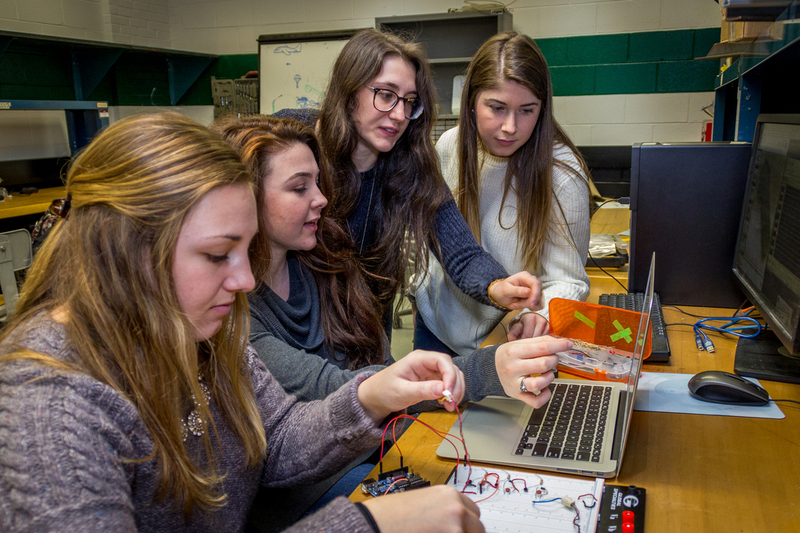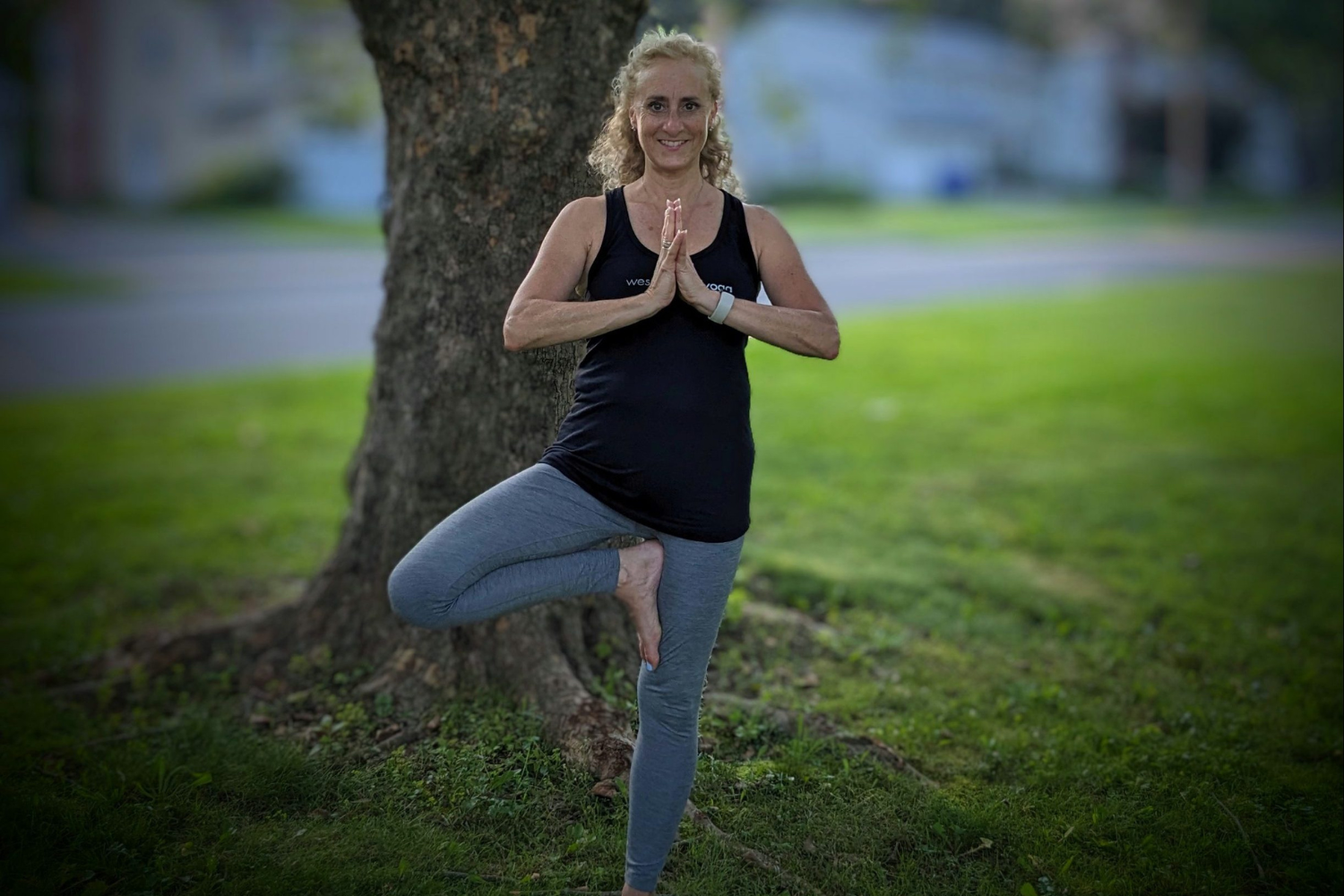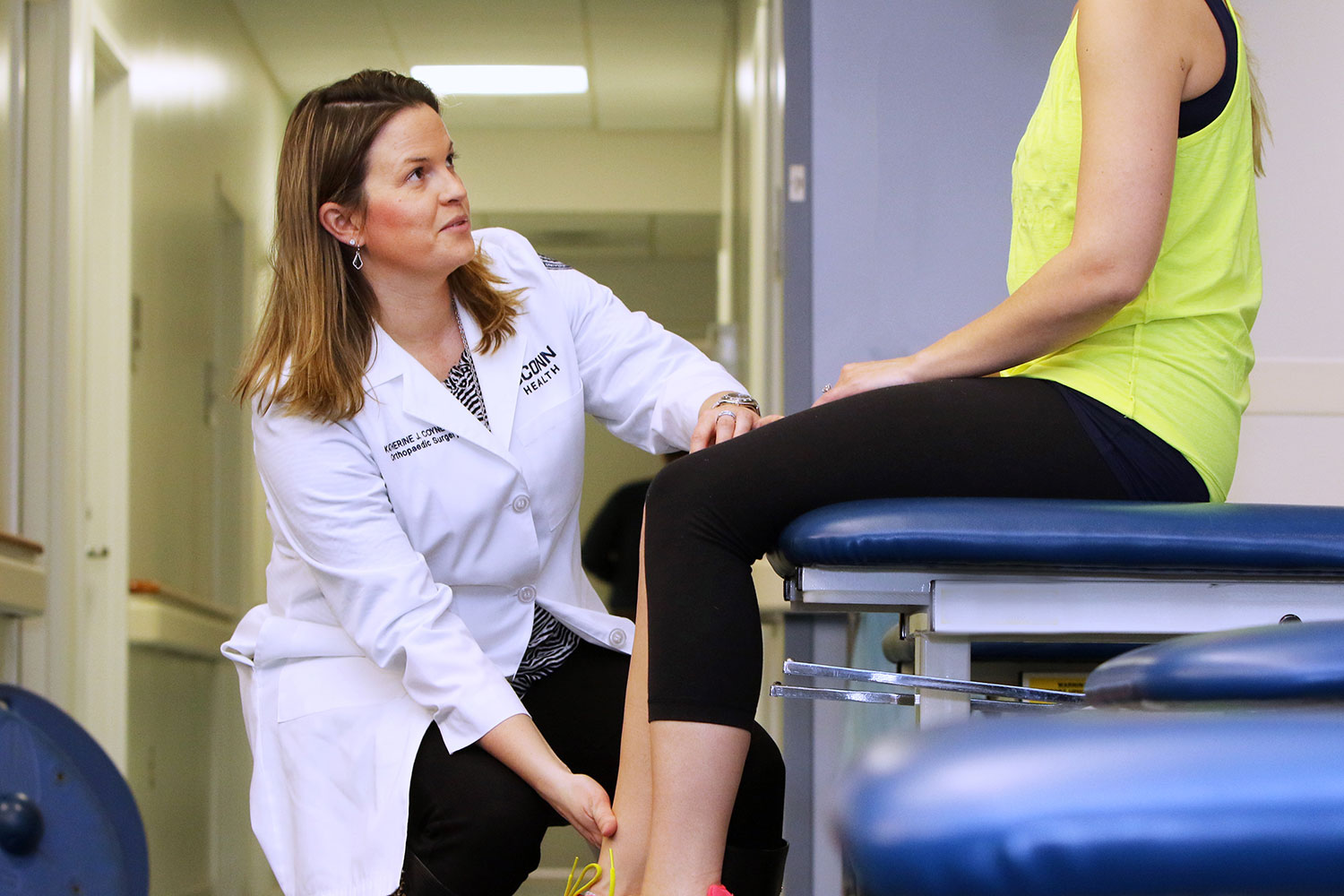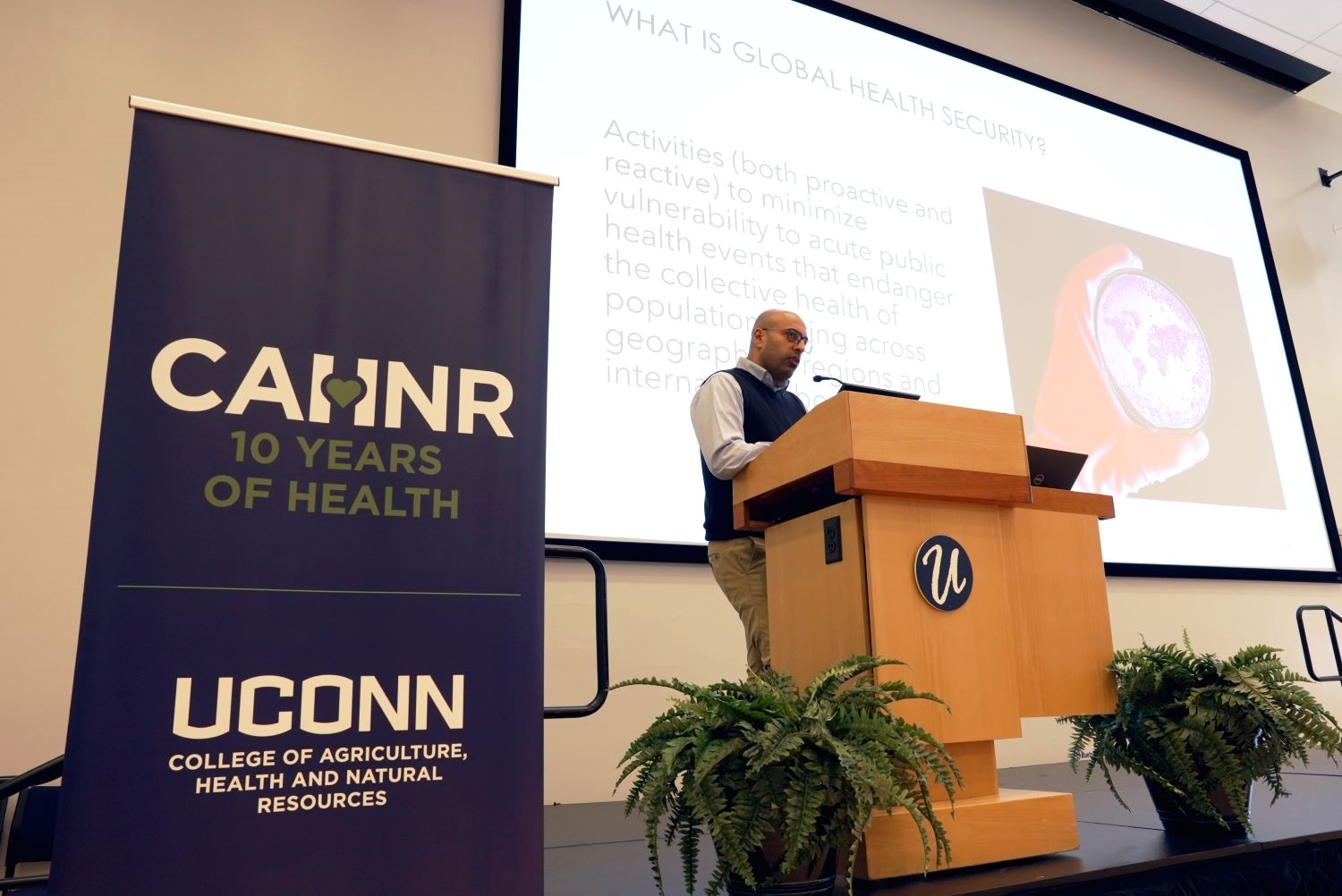In the United States, there are nearly 800,000 children and adults that exhibit one or more symptoms of Cerebral Palsy. According to the Centers for Disease Control and Prevention, 10,000 new-born babies will develop Cerebral Palsy every year. One of the major symptoms for Cerebral Palsy patients is loss of motor function, taking away the ability to walk with ease, and creating difficulty in feeding. There have been several advancements in devices that aid individuals with Cerebral Palsy, but not enough devices that rehabilitate the patient. Four biomedical engineering students are looking to tackle that issue with their innovative Senior Design project.
Katherine Bradley, Morgan DaSilva, Brianna Perry, and Brittany Morgan, the four students involved in the project, are working on a brace, which would go on the hand and arm of a Cerebral Palsy patient, and would use vibration therapy to treat and strengthen the muscles in those parts of the body. The project is being sponsored by the Biomedical Engineering department, and the group is being advised by Professor Krystyna Gielo-Perczak.
According to Perry, the idea came from their concentration in biomechanics:
“We all have a concentration in biomechanics, so our focus was to work on the joints, bones and muscles. One of the reasons we decided to work with Cerebral Palsy patients is because there are a lot of devices concerned with the whole body, but we wanted to do localized vibration treatment, which would allow patients to get better control of individual muscles.”

More specifically, their device uses localized vibrational stimuli to target four of the muscles in the arm and hand, which will hopefully lead to more strength and control. The device targets one of the biggest types of Cerebral Palsy, Spastic, which results in involuntary movements, stiffness, and mobility impairments. Patients would use this device for less than 20 minutes a day, three days a week, for a few months at a time. The ultimate goal will be that, in conjunction with the specially-designed silverware, cups, and tools available for people with Cerebral Palsy, this vibrational therapy will bring normalcy to their daily tasks.
While the group is still in the early stages of the construction of their device, they have faced some pitfalls along the way, which has slowed down their process. One of the first major roadblocks came in the fall semester, according to DaSilva:
“One of the biggest obstacles for us was that, since this project really hasn’t been done before, we had to do a lot of research in the beginning, including a lot of testing, which took months. So, basically, the first semester was all research, before we could even start diving in.”
The group also faced impediments when they went to go line up human test subjects with Cerebral Palsy. Because of their need for human testing, they found out that they had to submit their plans for review to the Institutional Review Board at UConn, which decides whether human-based trials are safe and viable. Morgan said that their inexperience with human testing got in the way in the beginning:
“One of the members of the IRB graciously offered to help us with our submission, but after reading it, he completely tore it apart, and we had to re-do it,” Morgan said. “And at the end, he even slipped in that we had the wrong document, which was outdated, and from 2014.”
But, it wasn’t all bad. The group collectively said that they have had some major high points along the way. One of those high points was just simply getting the project approved, according to Perry:
“Originally our advisor was hesitant about this project, because what we were doing was so new, so we really had to prove our case and do a lot a research to convince everyone this was viable.”
Bradley also said that the leap of faith they took with blazing their own path led to a major sense of validation:
“When we found out that no one had done this before, that really was a major breakthrough for us,” Bradley said. “I’m not gonna lie though, we had a little bit of a panic attack, but the validation and support we got from our advisor allowed us to push forward and gave us strength.”

As for what’s next for the group of four, they are waiting to hear back on things, but also pushing forward, according to Perry:
“Hopefully in the next week or so we’ll be hearing about our IRB application, and if not I’m definitely going to be feverishly sending out emails. If we don’t get approval to test with subjects that have CP, that will be a major letdown, but we’ll deal with that when it comes.”
Regardless of the decision from the IRB, Perry said the group would persist:
“We’ve faced adversity and challenges throughout this Senior Design process, but we’ve always found a way to push through. In the meantime, we will be working on improving the design and getting it to work properly, and then hopefully start clinical trials and do the data analysis soon after.”
This article is part of a multi-part series on engineering students, and their journey through senior design. Part two of this team’s journey will come out in early April 2018.



